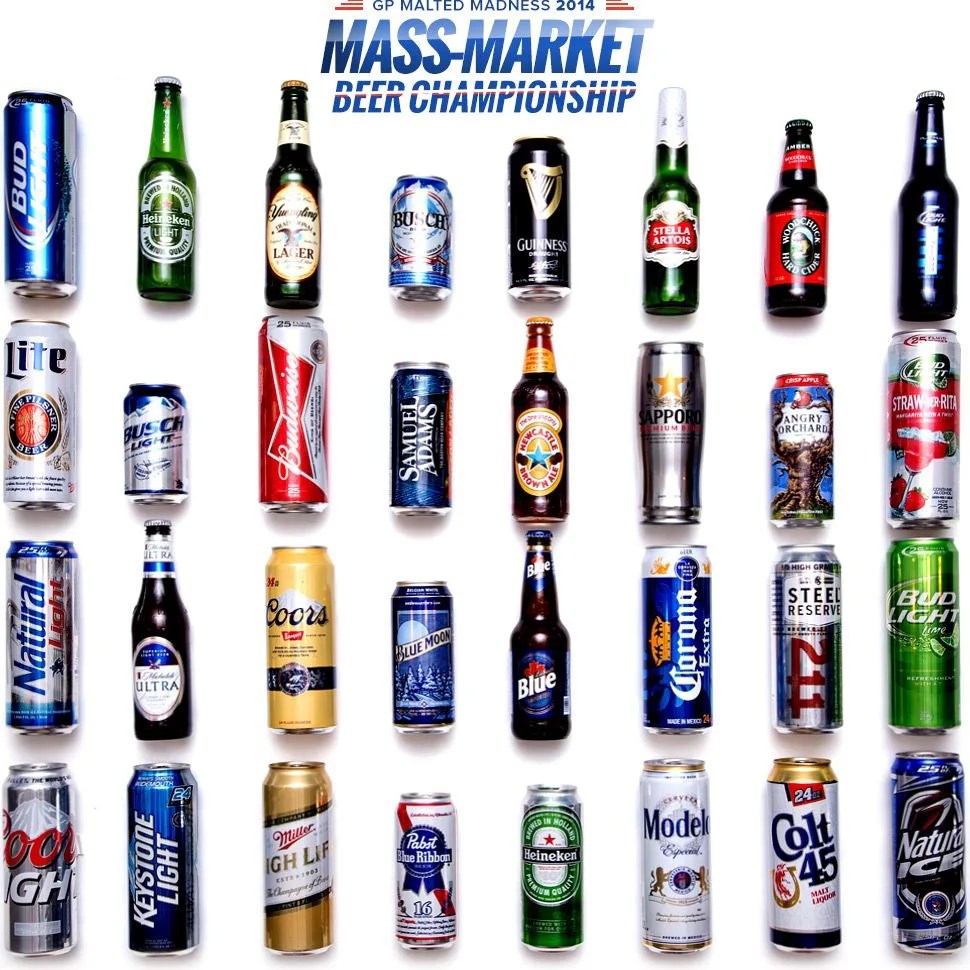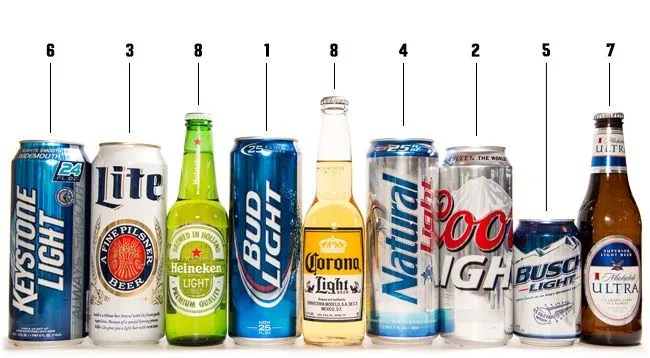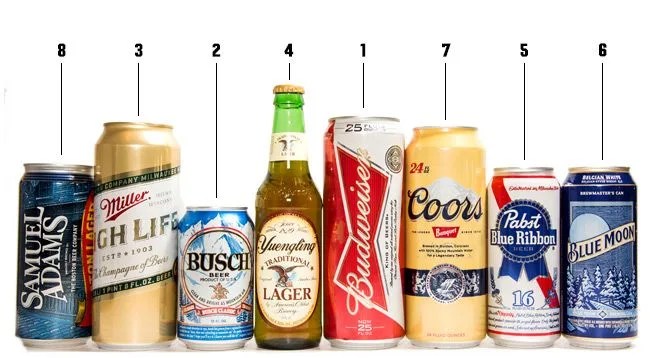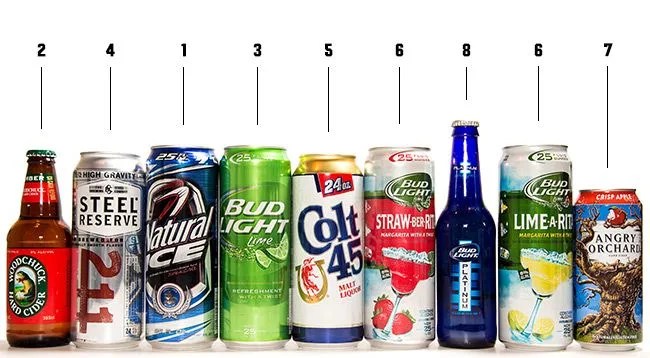We like craft beer. It’s tasty, it’ll get you drunk, and you can look down on others when you order it. You might remember that around this time last year we were holding an entire 64 beer tournament around the stuff, NCAA style. But sometimes, after a long day, it’s nice to unwind with a beer that doesn’t taste like pretension or use three adjectives to describe its hops. What the hell is mouthfeel anyway?

Craft beer may have more complexity and TLC, but the mass market behemoths have more history. Your father, your father’s father and his father before him were drinking this stuff, all the way back to the mid 1800s. (Pabst Blue Ribbon was introduced in 1844, Budweiser in 1876, Bud Light Lime soon after in 2008.) In other words, next time you shrug and say “whichever” when offered a Budweiser versus a Coors Banquet beer, you’re shrugging off what were once micro-breweries that, through grit and determination, survived the Great Depression and Prohibition to become part of something larger than themselves: billion dollar global partnerships.
So, we bring you the Mass Market Beer Tournament. After a few trips to the local 7-11, we assembled 34 of the most popular beers sold in America and pitted them against one another in a single elimination tournament (it’s the thing to do this time of year). If we could find it in a can, we bought it in a can. If the can was a tallboy, all the better. The point? If you’re going to drink in a Wendy’s parking lot, at least know which beer to shove into the paper bag.
The Cult Classic
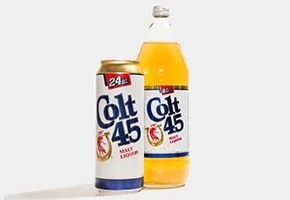
Depending on your age, you either associate Colt 45 with actor Billy Dee Williams holding a can, staring straight into the camera and saying “It works every time!”, or Afroman singing “Colt 45 and two zig zags, baby that’s all we need.” Either way, since the early ’70s, Colt 45 has been the iconic American malt liquor, even though brands such as Olde English 800 share the market.
The name: It’s not the gun and it’s not the horse. Colt 45 was named in honor of football player Jerry Hill, number 45 on the 1963 Baltimore Colts football team, the same year and city where the malt liquor was first introduced.
